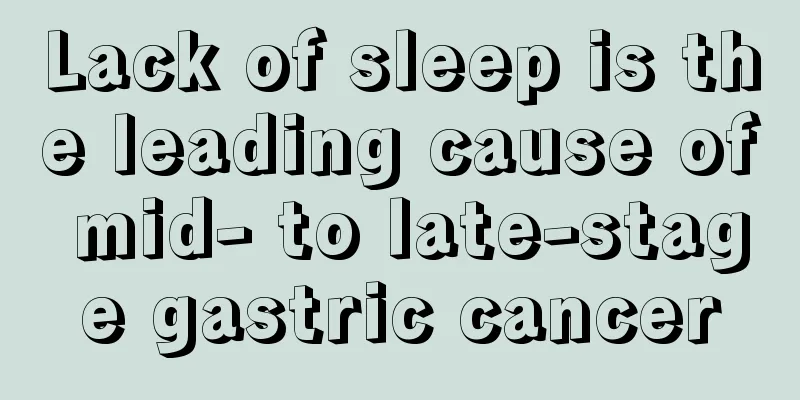Stiff and sore muscles on both sides of the neck

|
The widespread use of mobile phones and computers nowadays not only causes damage to our eyesight, but other parts of the body cannot be ignored either. Whenever we play with mobile phones or computers for a long time, our neck will become stiff. The slightest movement will make us feel that the nerves in the back of the neck are rigid, and we wish we could punch them open. The nerves and blood vessels in the back of the neck are blocked, causing soreness from the neck to the shoulders. You can ask a masseur to help you relieve it, but the pain is really unbearable. Of course, it is best to reduce the time spent playing electronic products. The muscles and ligaments in the neck are the source of our pain. Incorrect posture and long-term lack of muscle and ligament strength require us to change posture frequently. When the nerves are compressed, it can easily cause discomfort. Incorrect posture can easily cause bone spurs, and our muscle tissue cannot withstand long-term pressure and wear. For the neck joint, the neck ligaments and soft tissues may be severely over-stretched due to sudden external force, such as a car accident or intense contact sports. Another more common cause of severe over-stretching of soft tissues is long-term poor posture. Both of these can easily cause mechanical pain. reason Most of the patients suffer from this condition because they have too little neck movement, often lower their heads, bury their heads in reading or working, which causes the neck to bear too much weight. For the neck joint, the neck ligaments and soft tissues may be severely over-stretched due to sudden external force, such as a car accident or intense contact sports. Another more common cause of severe over-stretching of soft tissues is long-term poor posture. Both of these can easily cause mechanical pain. examine The cervical spine itself has to support the weight of the entire head. The larger the angle, the greater the load, causing the degeneration phenomenon to occur earlier. Over time, chronic neck pain[1], ligament strain, myofascial pain syndrome[2], and even degenerative arthritis may occur. In severe cases, symptoms of cervical nerve root compression may also appear. Differential Diagnosis 1. Neck pain: It is a common problem among young people or middle-aged and elderly people. Its symptoms can be local or conductive. The so-called local pain refers to pain in the neck alone, which may be caused by ligament sprain, muscle strain, or wear and tear of the joints. The so-called conductivity means that in addition to neck discomfort, there is also numbness and soreness in the hands. This is mostly caused by compression of the cervical nerve roots, or inflammation, adhesion, and tightening of the fascia from the neck to the arms and even the wrists. 2. Neck sprain: commonly known as stiff neck. Due to the invasion of wind and cold in the neck and back, blood stagnates and qi stagnates, and the meridians become uncomfortable. Or improper neck position while sleeping. Pain on one side of the neck caused by reasons such as sudden twisting of the head is called cervical sprain. In daily life, people sometimes wake up and feel pain and discomfort in the neck, with the head tilted to the painful side and unable to move freely. This is a common soft tissue injury caused by stiff neck, clinically known as cervical sprain. The neck, like the joints and waist, is a part that is easily sprained. 3. Neck stiffness: Neck stiffness refers to tension, swelling, hardening, spasm (cramps) and other phenomena in the neck muscles, and inflexible neck movements. Common in fatigue and cervical spondylosis. Neck stiffness is caused by continuous excessive muscle contraction, which not only reduces the blood supply to the neck muscles, but also causes the accumulation of metabolites such as lactic acid, causing muscle ischemic pain. Pain in the back of the head or on the top of the head may be a tension headache caused by lesions in the head or cervical spine. 4. Inability to turn the neck: Inability to turn the neck is a symptom of the clinical manifestation of locked-in syndrome. Locked-in syndrome, also known as locked-in syndrome, is an efferent state caused by lesions at the base of the pons. Vascular lesions mainly occur in the brainstem, mostly caused by bilateral occlusion of the pontine branches of the basilar artery, leading to bilateral infarction at the base of the pons. Mitigation methods ① Look left and right while keeping your head at a horizontal angle, then slowly turn left and right until your chin is close to your shoulder, looking backward or upward. ② Look up at the sky: Put your hands on your waist, tilt your head up and look at the sky. ③ Turn around and look back: stand in a lunge stance with your right foot forward, rotate your body to the left, push up to the sky with your right hand, stretch your left hand downward with force, and look back at your left hand. ④ Around the neck: Relax your head and neck and breathe naturally. First retract your chin and then make large clockwise and counterclockwise circular movements. ⑤ Elephant Nod: Stand at attention with your feet apart and your hands on your waist. Turn your head and neck as far to the right as possible and look to the right and rear. After breathing slowly, return to the original position. Bring your lower collar to your sternum as far as possible and look down at the ground. ⑥ Rhinoceros Looking at the Moon: Turn the head and neck as far as possible to the upper right rearward, and the upper body also slightly turn to the right. Look up at the sky with both eyes, then return to the starting position. Repeat the same movements on the left side. Each of the above movements needs to be held for five to ten seconds, and done five to ten times on each side. However, patients with neck pain should avoid scoliotic head movements to prevent side effects caused by compression of the intervertebral foramen on one side. |
<<: How to get rid of mites in quilts
>>: What is the muscle next to the neck called
Recommend
What side effects will the Di'ao Xinxuekang produce?
The importance of the heart is self-evident. If c...
How to check for endometrial cancer
Endometrial cancer has always troubled us in life...
What to do if eyebrows turn white? 7 ways to restore your eyebrows to black
Whitening of eyebrows is a sign of vitiligo, so i...
What causes vocal cord polyps
Vocal cord polyps are not uncommon, and the cause...
Colon cancer needs to be differentiated from 4 types of diseases
Maybe you already have some knowledge about the s...
How do elderly people with breast cancer survive with tumors?
Breast cancer lung metastasis cannot survive for ...
We need to know the causes of laryngeal cancer as early as possible
In recent years, the incidence of laryngeal cance...
How to effectively improve sleep quality?
Everyone knows that we need to get enough sleep e...
Will honey go bad if the weather is too hot?
Drinking a glass of honey water on a hot summer d...
Can rubbing ginger on the scalp help grow hair?
Ginger is a common ingredient in our lives. It ha...
What does tsh positive mean
I believe many of my friends are not clear about ...
Care for life and do a good job in preventing lung cancer
The common symptoms of lung cancer are long-term ...
Glomus tumor
Capillary hemangioma is a very common disease in ...
How to check lung cancer? Several effective methods to confirm lung cancer
In recent years, due to poor air quality and othe...
High cortisol
Cortisol is a hormone that is located in the adre...









